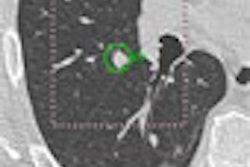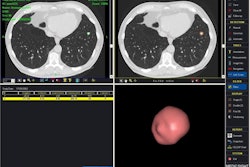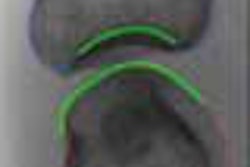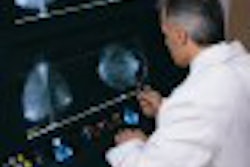A recent Ohio Court of Appeals decision to affirm a trial court's admission of computer-aided detection (CAD) results as evidence could have broad legal implications, according to an article in the January issue of the American Journal of Roentgenology.
"This ruling was affirmed by the Ohio Court of Appeals consisting of three appellate judges, and therefore has authoritative value in that jurisdiction and is considered persuasive authority in all other Ohio jurisdictions," wrote a group led by Dr. R. James Brenner of the University of California, San Francisco. "Other appellate courts throughout the United States often look to the reasoning of other state appellate courts when cases are presented to them. It is only a matter of time before CAD's admissibility is tested in other state courts."
The legal case stemmed from an asymptomatic woman in her early 60s who had received a screening mammogram in June 1998 (AJR, January 2006, Vol. 186:1, pp. 48-51). The study was compared with studies from 1996 and 1997, and was interpreted as showing no features of malignancy, according to the authors. A second screening mammogram a year later was also interpreted as normal, but six months later, the woman developed a clinical lump and was referred for a diagnostic imaging study.
That study revealed a mass with microcalcifications in the lower inner quadrant of the right breast; a biopsy showed infiltrating ductal carcinoma, and surgery confirmed a 4.8-cm infiltrating ductal carcinoma with a spread to 17 of 19 examined axillary lymph nodes.
The patient then initiated a malpractice lawsuit alleging a breach in the standard of care by the radiologists interpreting both the 1998 and 1999 mammograms. The plaintiff had dismissed the defending radiologist from the 1999 mammogram after a confidential lawsuit, so the only issue at trial was the remaining defendant's interpretation of the 1998 study, according to the authors.
Before the trial, the defense attorney engaged one of the defense experts who had used CAD in his own practice to digitize and analyze the 1998 films using CAD. The plaintiff objected to the testimony regarding CAD results as hearsay, the authors wrote.
The CAD results did not indicate a mark at the site of the calcifications that were eventually associated with malignancy or at any other area of either breast, the authors reported. The defense expert testified that CAD was not being advocated as a standard of care, but rather as an analytic tool for resolving the controversy regarding reasonableness of nonrecall.
After the jury returned a unanimous verdict for the defendant, the plaintiff filed an appeal, arguing that the use of the CAD results was an improper out-of-court statement (hearsay) and that the CAD results were not sufficiently probative or accurate to be considered relevant for consideration by a jury, according to the authors.
The appellate court upheld the trial judge's admission of the evidence and affirmed the jury verdict, they stated.
The authors found the case to be important because it illustrates that at least one appellate court has affirmed a trial court's admission of CAD results as reliable supportive evidence -- not proof -- of what may constitute a reasonable standard of care.
"It also shows how the use of negative CAD results may assist the defense in a case in which a lesion was not recalled," the authors wrote. "CAD was not advocated as a standard of care but rather as a technology sufficient to support the reliability and probative value of a defense expert's testimony that referred to its results."
Brenner and his co-authors reported that the appellate court judged the CAD results as "a scientific analysis conducted by computer, which performed a series of complex mathematic calculations based on detailed information it drew from an x-ray." Therefore, the court did not find the computer analysis to be hearsay.
By Erik L. Ridley
AuntMinnie.com staff writer
January 4, 2006
Related Reading
Breast MRI CAD yields specificity gains, December 12, 2005
CAD falls short of double reading for breast cancer detection, October 25, 2005
Sharp rise in U.K. breast cancer survival rates, October 10, 2005
Breast cancer drug move gives hope to U.K. patients, October 6, 2005
Jury is still out on U.K. CAD utilization, October 5, 2005
Copyright © 2006 AuntMinnie.com



















